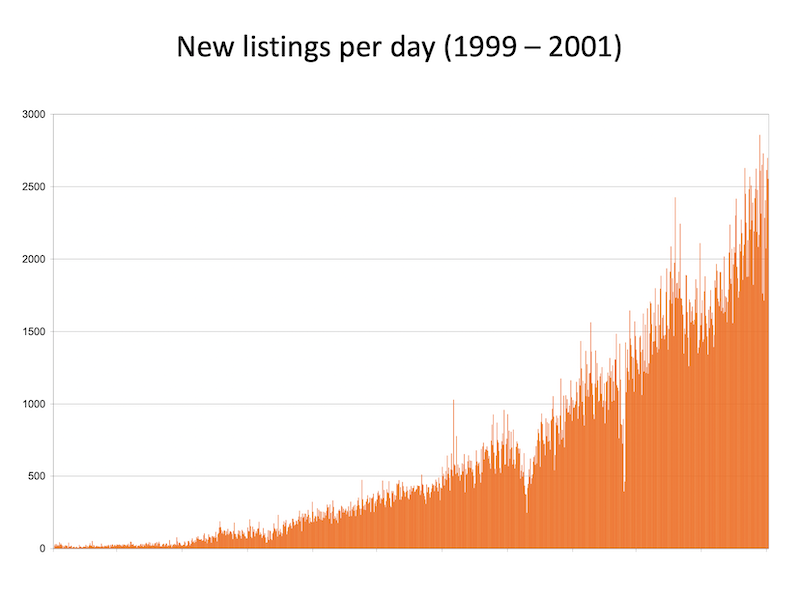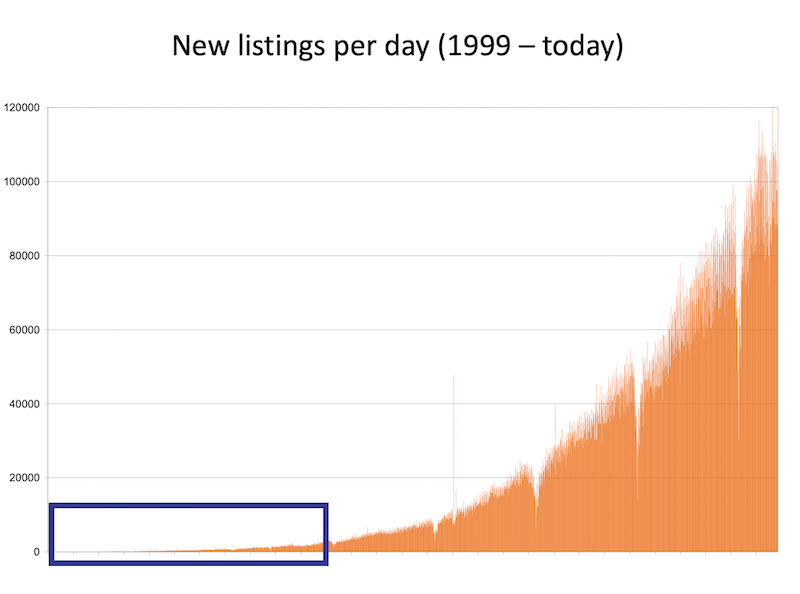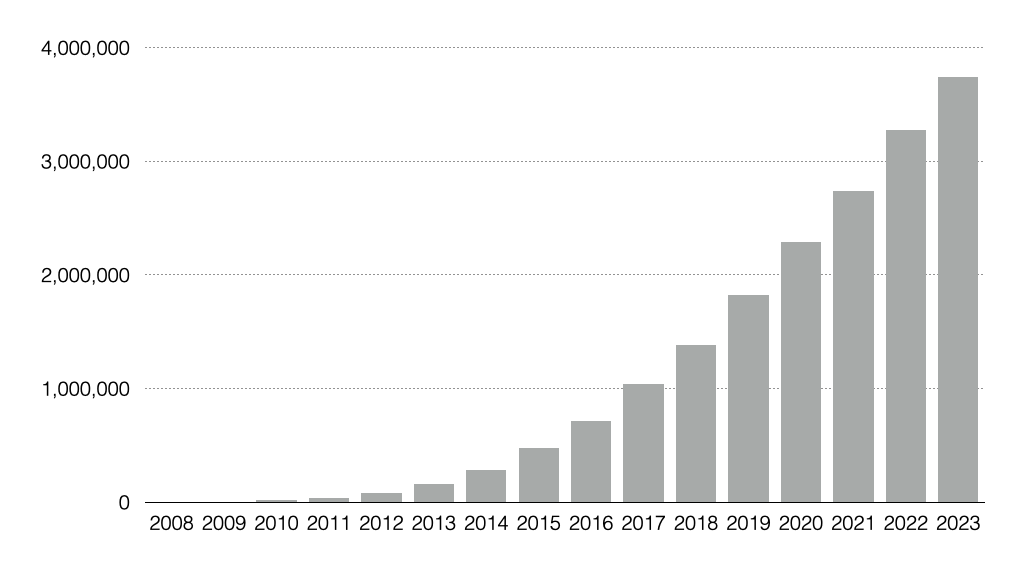The more slowly trees grow at first, the sounder they are at the core, and I think that the same is true of human beings.
One step at a time
In 2010, around the time I started to work on Vend and Timely, I spent a few hours with Jay Kimmelman from Bridge International Academies He totally changed my mindset about how to start and how to scale.
Like many founders I’ve met over the years, he was excited to describe the business opportunity he was working on and to demonstrate some of the progress he had made.
Remarkably, his “venture” was a new private school system in the heart of Kibera, one of the largest slums in the world on the outskirts of Nairobi, Kenya, an area of extreme poverty, and one of the harshest places you could possibly imagine to start and scale a business.
Jay is a no-nonsense person, and my notes from the day are succinct and to the point:
He talked about the curriculum he wanted to teach (effectively the product he was offering his customers):
- Reading with understanding
- Maths
- Critical thinking 1
He talked about the unknowns he needed to validate to show that his schools could be a viable business:
- Economics - can the service be delivered at the required cost point?
- Demand - will people pay?
- Quality - are the education outcomes good?
Finally, and most importantly, he talked about his plan to scale:
- Unit model - first school
- Replicated - second school
- Multiple - five new schools at once
- Many - so many new schools at once that it will only work if the systems are great - i.e. where a single superhero manager approach fails
This describes a generic approach to growth that we can apply to many other things.
First we solve a problem once. This often requires a remarkable individual and the brute force needed to ignore all of the valid reasons why it’s impossible.
Then we do it again, to prove to ourselves and others that the first time wasn’t an accident. The second time we see the useful patterns.
Then we build and finance a team to do it repeatedly at scale. These people will be mostly specialists with specific skills, compared to the generalists who get things started from nothing. We need to choose carefully because we soon discover their true character when the going inevitably gets tough.
Finally we create a repeatable and self-sustaining system that doesn’t rely on a specific individual or context. We need to prove we can do it at a scale where it is beyond the ability of one amazing person, or even a single team of amazing people, so it can only work if the systems are rock solid.
This is a common progression: first we learn to crawl, then walk, then run.
However, we’re inevitably tempted to skip the intermediate steps. We jump straight to trying to solve the problems of scale and repeatability, without first proving that we really understand what it takes to do it once, then twice. So it should be no surprise that the things we create are brittle, prone to failure and seldom achieve their potential.
As impatient as we are, we need to take the time to really absorb the lessons from each stage, because they create the platform for subsequent stages.
Hockey stick growth
How we report our progress says a lot.
Sometimes we focus on actual values (size):
We made a net profit of $15m
We manufactured 25,000 widgets this quarter
Sometimes we focus on the first derivative (growth):
Revenue increased 9% compared to last year
We hired 18 new team members
On rare occasions we can focus on the second derivative (acceleration):
We added 100,000 new customers in the last year, 70,000 of these in the last quarter
The number of medals won has increased at each of the last three Olympics
There is a time and a place for each of these types of measures. But the one we choose hints at the spin we give the results at each point in time. The temptation to hide is most obvious when one or two of the measurements are negative. For example, when we’ve stopped accelerating and don’t really want the headline to be “growth slows” or where we’ve stopped growing and prefer to focus on how big we got.
To see the full picture we need all three measures.
The ideal for any early-stage startup is the sweet spot where everything is positive: good numbers, growing fast and accelerating over time.
Often, incorrectly, startups refer to this as exponential growth, or “hockey stick” growth.2 This name makes much more sense once you realise that this expression is imported from North America where “hockey” means “ice hockey” not “field hockey” - the sticks make a very different shape when projected onto a graph!
I’ve seen that terminology mislead a number of people who are working on new things over the years. They hear it and mistakenly think that growth is either a hockey stick or a pool cue, and that it’s impossible to tell one from the other until the very last moment. So they flail away, with numbers that are not growing let alone accelerating, and hope that the inevitable up-tick is just around the corner. They imagine that if they can just keep going then one magic day their results will flip from being terrible to amazing.
When we look closer at those things that have grown to become very large, that is not typically what happens at all.
It’s true that those ventures described as an “overnight success” often take many years to get to that point. The mistake is thinking that they are not growing from the beginning.
Some examples…
In 2006, shortly after the sale, I spoke about Trade Me at the very first Webstock conference in Wellington. I showed two graphs in my presentation to demonstrate the growth in new listings on the site over time:

The first showed the results from the first two years of operations. It took a few months to get started then the number of listings accelerated from there. By the end of 2001 we were often adding more than 2,000 new listings per day and occasionally 2,500+.

The second graph showed the full seven years prior to when I was speaking. The blue box outlines the area that was included in the first graph. By the time the business was sold in 2006 there were over 100,000 new listings placed on the site every day - a 50x increase.
(The big dips each year are Christmas, when people took a break from the internet to spend time with family and friends, when anybody who was already addicted would tell everybody else about Trade Me helping to fuel a spike in growth every January!)
These two graphs have the same familiar shape. The numbers in the first graph are much smaller, and when we look at that same time period retrospectively it looks flat, but when we zoom in, or more importantly when we are living in that moment it’s not flat at all.
Trade Me grew from 10,000 registered members when I joined the team to around 100,000 members a year after that, and kept growing. The key numbers - new listings, completed listings, unique visitors, unique sellers, etc - were all growing during that time, even though the actual numbers were small.
The exact same thing is true of Xero’s subscriber base…
When we plot this over different time periods we see a very similar pattern:

The growth in the first eight years looks amazing - from 950 subscribers in 2008 to 78,000 in 2012 and then continuning to accelerate to over 475,000 in 2015.

When we zoom out an include the growth that has happened since then … by now those early years are nearly rounding errors.
Again, the numbers in the beginning are small, so growth looks modest in retrospect, but are actually significant in real-time - e.g. growing from 950 to 6000 subscribers in the second year, and nearly tripling again the following year to 17,000.
And just like the Trade Me results, the shape of the growth is similar, no matter what time period we are looking at.
What’s the lesson here?
Firstly, when we’re working on something that needs to grow in order to be successful then it’s really important to have some measure that is actually growing right away. It doesn’t matter what, especially at the very beginning. But if all of our numbers are flat then we’re not on a growth path.
Ideally we can identify one thing to focus on that is connected to the success of our business model. Once we pay attention to something specific, it inevitably highlights what is currently constraining our progress in that area and helps us identify the things we can do to improve that number.
Secondly, and even more importantly, we need to balance patience with milestones along the way. Even companies that eventually achieve remarkable growth, all start off with relatively modest numbers. But they constantly grow, and compound that growth. While it’s great to dream big, it’s consistency that wins in the end. So we should understand where we need to be next year, next month and next week in order to still be on track.
When we get there, we can just smile when others describe our venture as an overnight success.
-
As Tim O’Reilly pointed out: what we assume to be exponential growth is nearly always sigmoidal, given enough time, and sinusoidal, given even more. ↩︎